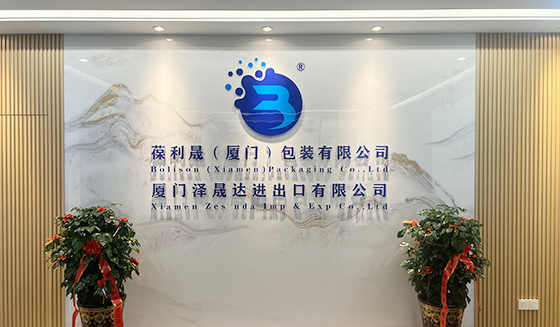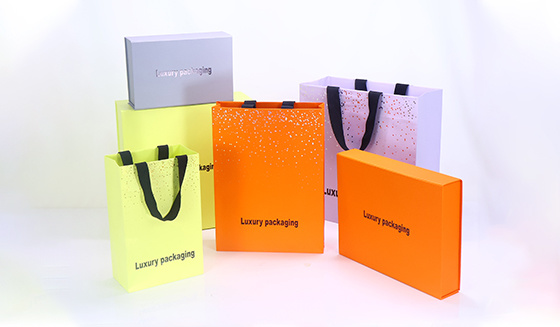06
2025
-
03
The Ultimate Guide to Choosing Custom Packaging Bags for Your Food Products
The Ultimate Guide to Choosing Custom Packaging Bags for Your Food Products Table of Contents 1. Introduction: The Importance of Custom Packaging for Food Products 2. Understanding Different Types of Packaging Materials 2.1. Plastic Packaging Bags 2.2. Paper Packaging Bags 2.3. Biodegradable and Compostable Options 3. Key Factors to Consider When Choosing Custom Packaging Bags 3.1. Product Compati
The Ultimate Guide to Choosing Custom Packaging Bags for Your Food Products
Table of Contents
1. Introduction: The Importance of Custom Packaging for Food Products
2. Understanding Different Types of Packaging Materials
2.1. Plastic Packaging Bags
2.2. Paper Packaging Bags
2.3. Biodegradable and Compostable Options
3. Key Factors to Consider When Choosing Custom Packaging Bags
3.1. Product Compatibility
3.2. Shelf Life and Preservation
3.3. Consumer Appeal and Branding
4. Design Essentials for Custom Packaging Bags
4.1. Visual Elements: Colors, Logos, and Graphics
4.2. Functional Design: Size, Shape, and Closure
5. Regulatory Compliance in Food Packaging
6. The Role of Sustainability in Packaging Choices
7. Cost Considerations for Custom Packaging Solutions
8. FAQs about Custom Packaging Bags for Food Products
9. Conclusion: Making Informed Choices for Your Food Brand
1. Introduction: The Importance of Custom Packaging for Food Products
In today’s competitive food industry, **custom packaging** plays a critical role in not only protecting the product but also in marketing it effectively. Custom packaging bags are essential for conveying the **brand message**, ensuring product freshness, and meeting consumer expectations. By selecting the right custom packaging solution, businesses can significantly enhance their market presence.
2. Understanding Different Types of Packaging Materials
Choosing the right material for your custom packaging bags is a fundamental step in creating an effective packaging solution. Here, we explore the most popular materials used in food packaging.
2.1. Plastic Packaging Bags
Plastic bags are versatile and commonly used in the food industry. They offer **moisture resistance**, are lightweight, and can be designed in various sizes and shapes. Common types of plastic include polyethylene and polypropylene. However, the environmental impact of plastic is a growing concern that businesses must address.
2.2. Paper Packaging Bags
Paper bags provide a more sustainable alternative to plastic. They are biodegradable and can be recycled, appealing to eco-conscious consumers. Paper packaging is perfect for dry goods and can be customized with various prints and finishes that enhance the brand image.
2.3. Biodegradable and Compostable Options
With increasing awareness of sustainability, biodegradable and compostable bags are gaining popularity. These bags decompose more easily than traditional plastic, making them an excellent choice for brands committed to environmental responsibility.
3. Key Factors to Consider When Choosing Custom Packaging Bags
When selecting custom packaging bags for food products, several critical factors must be taken into account.
3.1. Product Compatibility
The first step in choosing the right packaging is ensuring compatibility with the food product. For instance, products with high moisture content require packaging that can provide a barrier to moisture and oxygen, whereas dry products may have different requirements.
3.2. Shelf Life and Preservation
Packaging significantly affects the shelf life of food products. Custom packaging bags should be designed to preserve freshness, flavor, and nutritional value. Consider options like vacuum sealing or barrier materials to extend shelf life.
3.3. Consumer Appeal and Branding
The design of the packaging should resonate with your target audience. Eye-catching designs, informative labels, and clear branding can enhance consumer appeal and encourage purchasing decisions. Conducting market research can help determine what designs attract your ideal customers.
4. Design Essentials for Custom Packaging Bags
The design of custom packaging bags is crucial for drawing consumer attention and conveying brand identity.
4.1. Visual Elements: Colors, Logos, and Graphics
Choose colors and graphics that align with your brand's identity. Your logo should be prominently displayed, and the overall design should evoke the emotions associated with your food product. Consider using imagery that reflects the taste, texture, and ingredients of the food.
4.2. Functional Design: Size, Shape, and Closure
The size and shape of the packaging bags should suit the product and facilitate easy handling. Additionally, consider the type of closure—whether it be a zip lock, heat seal, or adhesive strip—to ensure product freshness and consumer convenience.
5. Regulatory Compliance in Food Packaging
Navigating the regulatory landscape is vital for food businesses. Packaging must comply with local and international food safety regulations, ensuring that materials are safe for food contact and that labeling meets legal requirements.
6. The Role of Sustainability in Packaging Choices
As environmental concerns rise, consumers are increasingly seeking brands that prioritize sustainability. Opting for eco-friendly packaging not only helps the planet but also enhances brand loyalty. Consider using recyclable or biodegradable materials and minimizing packaging waste through innovative designs.
7. Cost Considerations for Custom Packaging Solutions
While it’s essential to invest in quality packaging, balancing cost and effectiveness is crucial. Evaluate the total cost of ownership, including production, shipping, and disposal expenses. Request quotes from multiple suppliers and consider long-term contracts to secure better pricing.
8. FAQs about Custom Packaging Bags for Food Products
What are the benefits of using custom packaging bags for food products?
Custom packaging bags enhance brand visibility, preserve product freshness, and cater to consumer preferences.
How do I choose the right material for my food packaging?
Consider the product’s nature, shelf life, and target audience when selecting the appropriate material.
Are biodegradable packaging bags safe for food products?
Yes, as long as they are certified for food contact, biodegradable packaging bags can be safe alternatives.
How can I ensure my packaging design stands out on the shelf?
Utilize vibrant colors, attractive graphics, and clear branding to create an eye-catching design.
What regulations should I be aware of when packaging food products?
Familiarize yourself with local and international food safety regulations regarding materials and labeling.
9. Conclusion: Making Informed Choices for Your Food Brand
Choosing the right **custom packaging bags** for your food products is integral to your brand’s success. From understanding material options and design essentials to ensuring regulatory compliance and sustainability, every detail matters. By making informed decisions, you can enhance your product’s appeal, preserve its quality, and contribute positively to the environment. Elevate your brand through effective packaging that resonates with consumers and stands the test of time.
custom packaging bags for food






